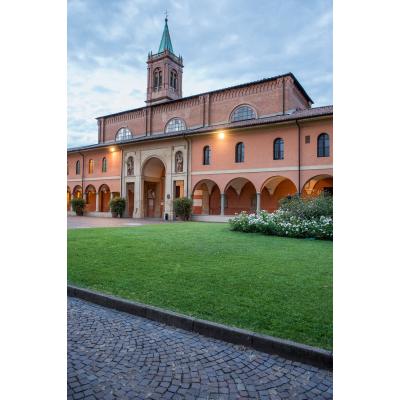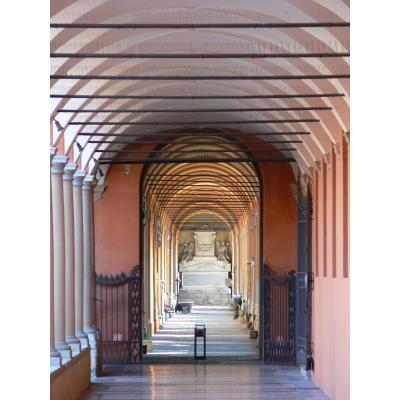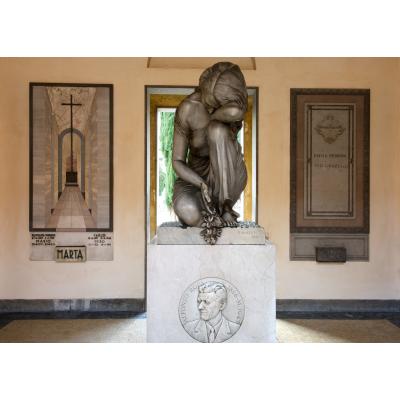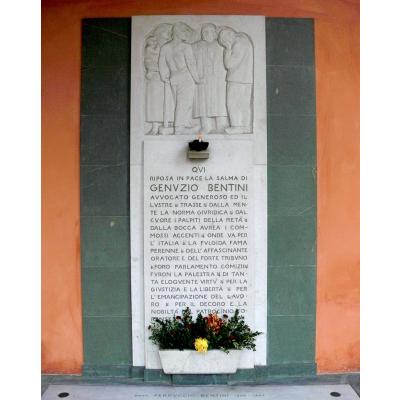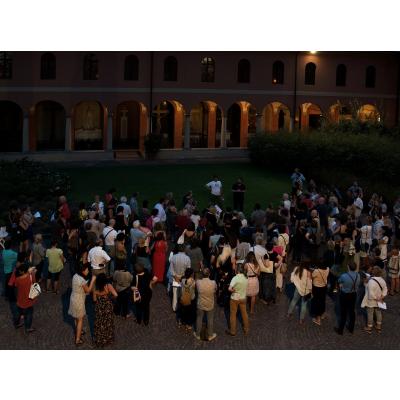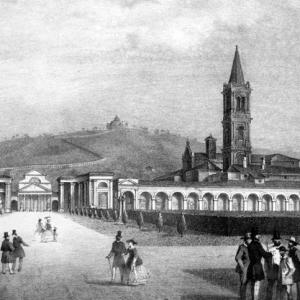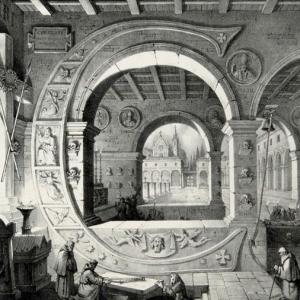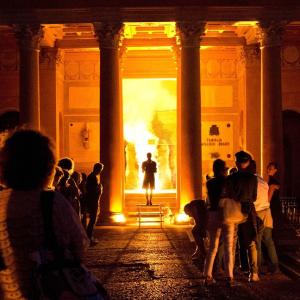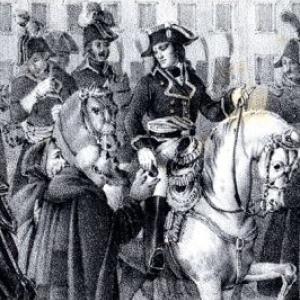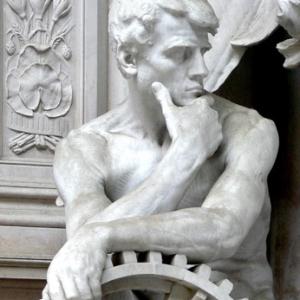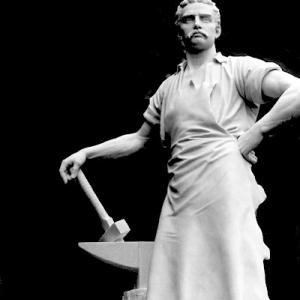Schede
The huge courtyard of the church is the result of an extensive restoration work in 1932 blending the styles of the buildings overlooking this space. The ancient plans show that it was once divided into two cloisters. If we look at the east porch it is possible to see how the style of the capitals changes near the church entrance. Luigi Crespi, in his guide of Certosa in 1793, describes the entrance to the monastery and to the cloisters through a porch built in 1768 and designed by the architect Gian Giacomo Dotti.
Little remains of the original layout (plan), a part from of the 18th century entrance designed by Gian giacomo Dotti, son of the famous Carlo Francesco. Angelo Raule, describes the building in his guide of Certosa, published in 1961, as follows: “ This majestic lobby, designed in a Tuscan order, is divided into five spans covered inside with barrel vaults. The façade shows the elegance of the classical style thanks to five arches and refined cornices.”
The porch at the entrance of the church is embellished with two earthenware statues representing king David and queen Esther by Gabriele Brunelli (1616-1682). The two statues come from the confraternity of "Buon Gesú", currently abolished. The imposing 15th century church of “San Girolamo” rises above the porch with the 17th century bell tower in the background. On both sides of the front door of the church there are several graves and funeral memorials, which are part of the history of the place. Among them: the high relief that represents bishop Sant’Ugo giving the church model to San Girolamo; the grave, on the church’s side, honors the stay of Charles V in the monastery in 1529 and there is another grave dedicated to Antonio Zannoni, for the visit at Certosa’s cemetery for the prehistoric Congress, in 1871, to see the Etruscan excavations. At the end on the left side, there is a little funeral slab with a portrait of Diego de Vaena (that comes from an abolished church), who died in Bologna during the incoronation of Carlo V.
In 2012 the memory dedicated to the visit, in 1844, of the famous english writer: Charles Dickens has been added. The porches in the south side and the west side have a lot of important works made in 1940 after the harmonization of the cloister. In the south side it’s possible to admire the huge bronze made by Luciano Minguzzi for the family Fazio (1947). Next to the bronze it’s possible to admire an another work made by Enzo Pasqualini in 1948, in the memory of Genuzio Bentini (1874-1943), a famous lawyer that fought for the emancipation of work and justice . On the west side there are severals sculptures made by Mario Sarto who worked also with marble (1885 - 1955). It’s also possible to see some works by Bruno Boari (1896 - 1964) commissioned by the Mineral’s and Grandi’s families (1941). It’s important to emphasize the sculpture in the round "la Dolente" made by Renaud Martelli (1910-1995 ) for the family Ropa (1945) and the cell "Fanciullacci", at the center of which there is "il cristo" by Luciano Minguzzi (1941). The courtyard of the church during all the 1800 was the big space where there were the flats of the dependents, meanwhile on the west side it was possible to see some stores and laboratories. The real cemetery started from the south porch, that opened to the cloister Primo (first) and to the "sale delle antichità" (antiquities rooms). Above the central arch of the south side, it’s still possible to see the crest of the district of Bologna.
Traduzione a cura di Bandini Alessandra, Martina Marchese, Giacomo Nicoli, Thomas Niyongabo; classe 3H, nell'ambito del progetto di Alternanza scuola-lavoro 2018/19 con il Liceo Ginnasio Luigi Galvani di Bologna.


